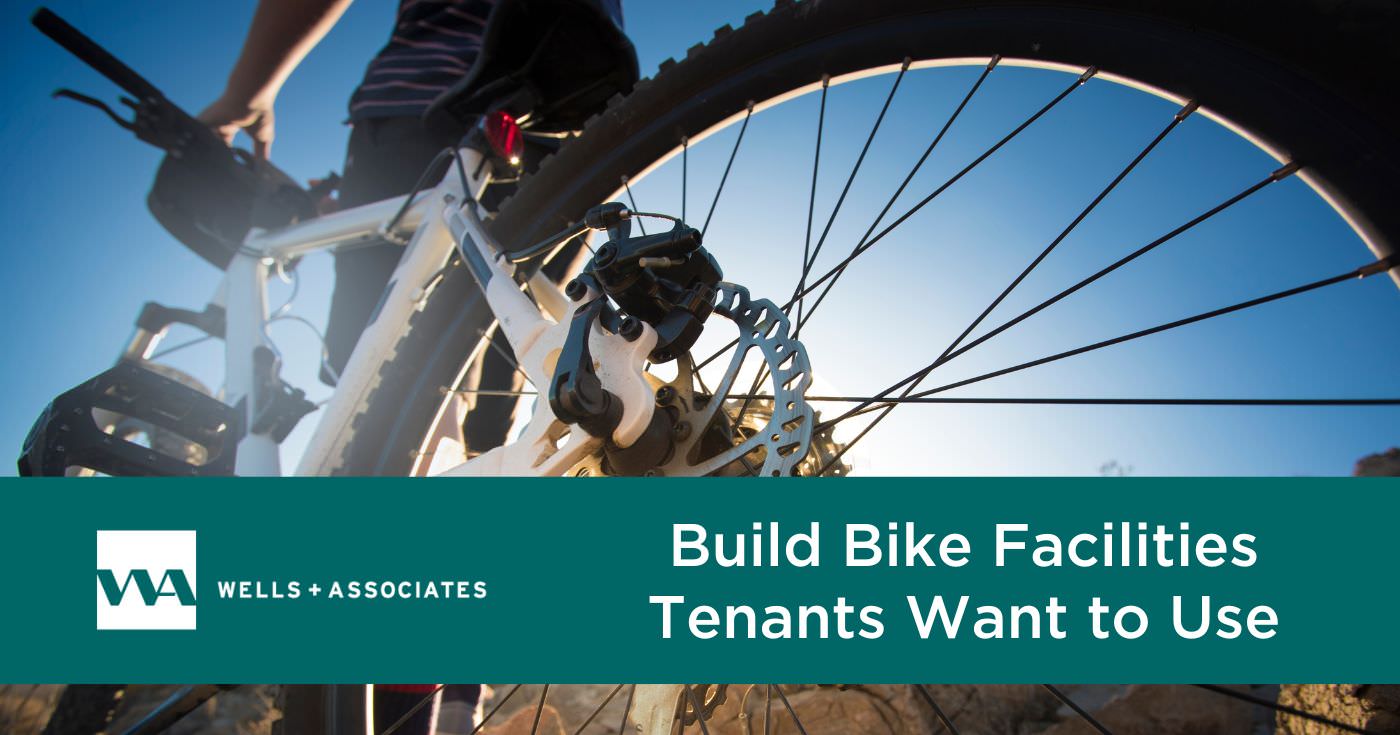Across the country, guidelines and requirements for the design and installation of bike rooms and facilities vary. Where do you start when you want to install new facilities or improve the bike amenities you already have? This is a brief list to help you improve your property to serve tenants and customers better, maintain the competitiveness of your property, and increase occupancy.
#1. Not All Bike Facilities Are Equal, or Required
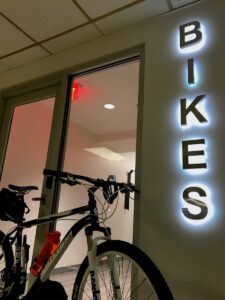 Start by thinking what your tenants and users need. Is it just a short-term need, in a public place? If outdoors, should the bike parking be covered?
Start by thinking what your tenants and users need. Is it just a short-term need, in a public place? If outdoors, should the bike parking be covered?
Does bike storage need to be locked or enclosed? The ultimate in bike parking, called “Class 1” in some jurisdictions such as Arlington County, Virginia, is often intended for employees and residential tenants and provides overnight and long-term parking that is secured in locked, enclosed rooms.
While not typically required, you may also want to consider bike parking based on who will be using the space. For example, if the people using it may be carrying larger items or toting children back and forth, setting aside a few spaces that can accommodate cargo bikes or bikes with trailers may be important for tenants.
With the rise of e-bikes, e-bike charging racks may be a helpful addition that keeps bikes out of apartments or workspaces and where they’re intended to be.
#2. Don’t Forget the Signage (or, Pay Attention to UX)
It’s increasingly common for people to speak (or complain about) the “UX” (user experience) when they are navigating a website or a smartphone app. Lost in this talk about digital experiences is the “UX” of physical spaces.
Bicyclists don’t want to feel like second-class citizens, so it’s important to make them feel immediately comfortable by guiding them with proper signage. The DDOT’s Bike Parking Guide states, for example:
“… signs must be posted in a prominent place at each entrance to the building or structure stating where bicycle parking spaces are located. The sign must have a white background with black lettering that is at least 2 inches in height.”
Some properties go one step farther with enhancing the UX of their bike facilities by creating a bike lane to and from the bike room to help commuters easily find bike parking as well as signaling to drivers to be aware of bicyclists coming and going. Better yet, instead of hiding bike parking away in a garage, providing street-level access provides safer and easier access for tenants.
#3. Amenities Within Your Bike Amenity
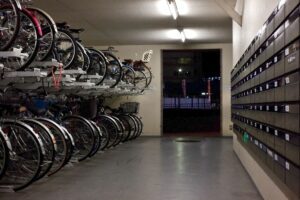
Simply having a place to park a bike isn’t even the bare minimum. Bikes need regular maintenance, so being able to care for one’s bike before the commute home is important.
The Bike Café in the Circa Central apartment building in Phoenix, Arizona, provides a good example of how to provide the amenities needed for owners to care for their bike equipment. The Bike Café features a repair stand, a floor pump, and a wash station. That isn’t all: a vending machine is around the corner.
There are many other ways you can “amenitize” your bike parking facilities – and even turn them into a branding opportunity. Many hotels, residential buildings, and employers provide branded loaner bikes that residents, visitors, or employees may use and return if they don’t have their own personal bike. Not ready to make that investment? Simply creating a property-branded mural or bike map and incorporating it into your bike room’s design can go a long way to create a more welcoming space.
#4: Low-Cost Supply: Ask Your Locality for Help
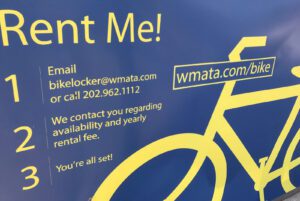 Sometimes all that is needed is a bicycle parking corral or bicycle rack. The City of Alexandria, Virginia, offers the opportunity to request both, as long as they are not installed on private property. Installed on a seasonal basis in the spring, summer, and fall by the Alexandria program, the availability of public corrals and racks is intended to improve community growth, increase safety, allow more room to walk for pedestrians, and provide ease of access for visiting customers.
Sometimes all that is needed is a bicycle parking corral or bicycle rack. The City of Alexandria, Virginia, offers the opportunity to request both, as long as they are not installed on private property. Installed on a seasonal basis in the spring, summer, and fall by the Alexandria program, the availability of public corrals and racks is intended to improve community growth, increase safety, allow more room to walk for pedestrians, and provide ease of access for visiting customers.
If your property is experiencing issues with dockless mobility options, such as shared e-bikes or e-scooters, being parked incorrectly or blocking access to your site, these solutions can help.
#5. Pay Attention to the Details
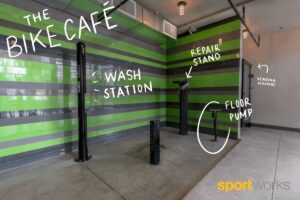
Localities can have firm guidelines on the kind of bicycle racks to install and the method of installation. For example, the City of Alexandria’s Bicycle Parking Guidelines go into some detail about these issues. Their guidelines include requirements such as:
- Rack elements should support the bicycle upright by its frame in two places
- Racks should also allow front-in parking: a U-lock should be able to lock the front wheel and the down tube of an upright bicycle
- Racks should provide easy, independent bike access. Inverted “U” rack elements mounted in a row should be placed on 30” centers
- 72 inches (six feet) of depth should be allowed for each row of parked bicycles
People also have preferences as to the type of bicycle racks they are willing to use. For example, we commonly see vertical bike racks being used to save space; however, this makes bike commuters squeeze in between bikes and assumes all bicyclists have the height and strength to easily lift their bike into the vertical position. Offering a mix of bike parking options or a two-tiered system can help improve accessibility to your bicycle parking while still saving space.
As you can see, “winging it” really isn’t an option when implementing new or improved bicycle facilities – either because tenants and commuters expect better service or because local regulations require it.
Sources:
City of Alexandria, Virginia Bicycle Parking Standards & Information for Developers
Arlington County, Virginia Bike Parking Standards Guide – 2022
District Department of Transportation (DDOT) Bike Parking Guide

